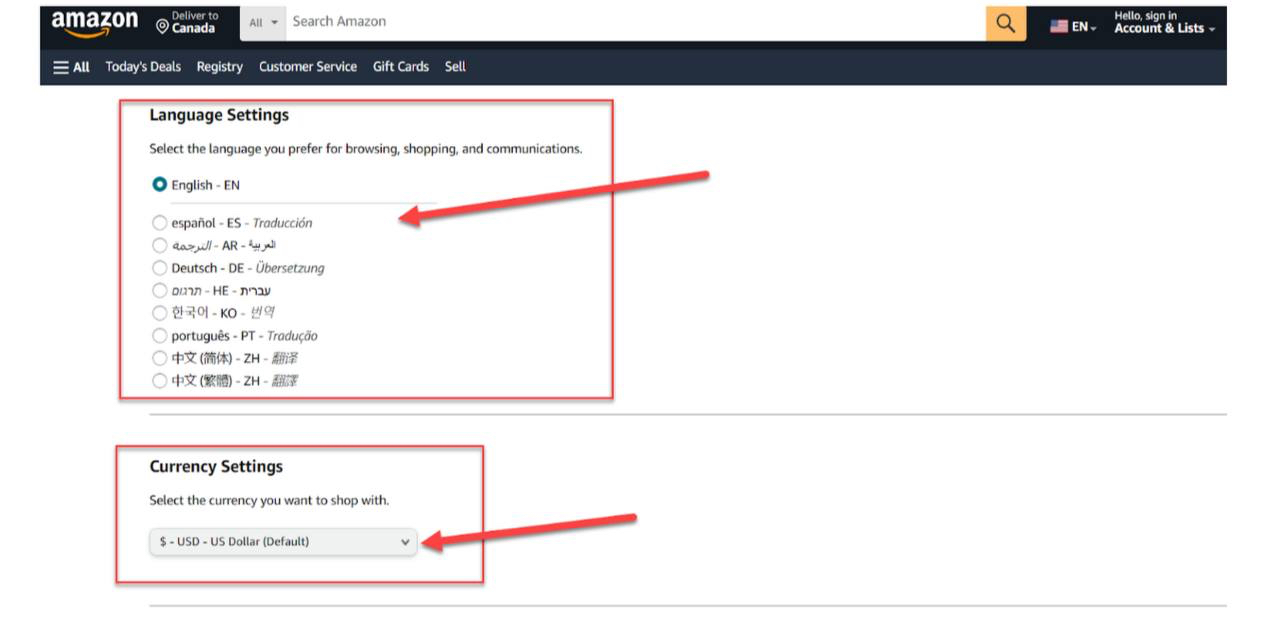Imagine this... Someone online recommends that you try out a hosting service called Opedia. The person told you about all the juicy stuff Opedia has...
Content Localization: An Explicit Guide
-
8 mins read
-
December 3, 2023

If you were given a proven technique to reach a wider audience and gain new customers quickly, would you jump at such an offer?

If you will accept that offer, this article is for you. Sit tight.
Content localization is a powerful strategy that can help you reach new audiences in international markets, and acquire up to 37% revenue growth.
In this article, we will discuss everything you need to know about content localization, and how to use this strategy to your advantage. Follow this guide to uncover all the tips and secrets.
Let’s get to it!
What Exactly Is Content Localization?
Content localization is making your product or service locally accessible to customers in a target location and market – by modifying your website content to match the language and culture of that target audience.
It often involves translating, redesigning, and customizing your existing website content to completely sync with your target audience.
For example, a fashion brand in China that wants to reach a new audience in the United States will have to translate its website content into English, while also modifying the content to sync with American culture and trends.
Here’s a screenshot showing how Amazon uses content localization on its website.

Country/Region selection page on Amazon.com
On the above page, Amazon lets you choose your preferred currency and language to make your shopping experience more personalized.
By switching to another language, the Amazon website not only translates every text you see, but also changes the entire view to feel more relatable.
Can Content Localization Help You Win More Customers?
Yes.
Content localization helps you attract new customers in a different market, and also build trust with your target audience.
Think about this…
Imagine you’re trying to sell a product online to a Chinese audience using website content written in English. Nǐ jiàng rúhé chūshòu?
See what we did there?
If you don’t speak Chinese, you can’t understand content written in Chinese. It’s the same way for a traditional Chinese man who doesn’t speak or understand English.
But don’t take our word for it. Here’s what research says about localized content:
- 65% of people prefer content in their own language, even if it is of poor quality.
- 73% of people want product reviews in their own language, even if no other information is available in their language.
- 76% of people prefer products with information in their own language.
- 40% of people will not buy from websites in other languages.
Get your content correctly translated into other languages and watch your sales skyrocket.
However, be careful not to overstep racial, cultural, or religious borderlines when localizing your content.
Step-by-Step Guide to Creating a Content Localization Strategy
At this point, you already know what content localization is. But then, what’s a content localization strategy?

A content localization strategy is your unique approach to modifying your website content to target a specific audience. It involves understanding the target audience’s language, culture, and preferences – while tailoring your content accordingly.
Consistency is the first thing to consider when creating a content localization strategy. Your goal is to ensure that the localization strategy for every region maintains a consistent identity of your brand.
Here’s a simple step-by-step guide to creating your content localization strategy:
Step #1: Analysis
Before diving into content localization, hit the brakes. Discern why you want to do content localization and the specific audience you want to target. Here are some steps to help you with doing that.
-
Analyze Your Business Goals
Examine your company’s needs, goals, and objectives. Determine the reason for content localization. Is it to increase website traffic, improve customer satisfaction, or boost sales? Answering this question will help you determine the best approach to localizing your business content.
-
Conduct Market Research
Next up is market research. Don’t leave any room for assumptions.
Stalk your target audience and do a detailed competitor analysis. This will help you determine what content attracts your target audience, as well as what’s trending in the target market.
Use SEO tools to discover what your competitors are doing and potential gaps you can seize.
Step #2: Decision-making
After doing proper analysis, the next stage is decision-making.
Scrutinize your resources—budget, timeline, and team roles. Determine how wide your localization efforts should stretch, which assets take the spotlight, and which parts of the user journey get VIP treatment.
To ease the stress off you, you can also choose a content localization expert.
Step #3: Execution
Once you’re all set on the decisions, it’s time to execute your content localization plan.
Here are some steps to follow:
- Action point 1: Prepare the content for localization. Format, encode, and remove hard-coded text.
- Action point 2: Organize files and develop unique style guides, glossaries, and other language assets for easy localization management.
- Action point 3: Set up a localization tool and assemble a team of language experts to execute your translation projects.
- Action point 4: Ensure the experts translate, review, and edit all content to eliminate spelling, grammar, and tone errors.
- Action point 5: Deploy the content to the appropriate platforms and channels.
- Action point 6: Engage native speakers in conducting linguistic tests to ensure high-quality content across all markets.
Types of Content to Consider for Localization
In case you are asking: What type of content should be localized?

The short answer is everything.
From product descriptions – to terms and conditions – to your company’s mission statement, localize everything possible.
Here are some suggestions to guide you:
1. Localize content that can boost your brand’s awareness and credibility in a new market. This can include website content, banners, videos, podcasts, or even physical flyers.
A key example of this is how Coca-Cola’s “Share a Coke” campaign would say Share a Coke with “John” or “Sarah” in the USA but feature names like “Aoife” and “Oisín” in Ireland.

Image source: Cocacolaunited
2. Localize all marketing materials aimed at driving traffic and boosting conversions. Such marketing materials may include blog posts, social media campaigns, and the content of your paid Ads.
Pro Tip: Check every text, image, audio, and video to ensure the content is in sync with your audience. Also, pay attention to your legal, technical, and UI/UX content.
How Content Localization Benefits Businesses
Speaking the language of your audience, both literally and figuratively — makes your business relatable and helps you gain traction and trust easily.
As a result, you can expect the following benefits:
1. Improved Online Visibility
Google and other search engines will begin recommending your business and website content to more people in new regions.
2. Higher Website Traffic and Engagement
More people will click on your business’ website if it’s showing in their language.
3. Shorter Time to Market
You can start making sales from day one, if your content has been properly localized and optimized for conversion.
4. Competitive Edge
Localizing your content will give you an instant edge over competitors that are yet to penetrate the region.
5. Effective Marketing and Advertising
If you choose to run ads, more people will respond and convert if your website is localized.
Common Localization Mistakes and How To Avoid Them
1. Ordinary Translations
The number one localization mistake people make—is thinking that content localization is “literally” translating your website text into other languages.
Too often, they’ll rush to get their website content translated without considering cultural nuances.
By all means possible, avoid making such a costly mistake!.
Content localization requires you to think deeper and ensure that all translated content is adapted to match your target audience’s prevalent culture, religion, trend, and taste.
2. Leaving Out Critical Content
It’s common to see many businesses localize content they deem important – while leaving out the others. This may include localizing only your product pages, while neglecting other important pages like the Terms of Use or Privacy Notice page.
Ensure that no page is left out on your website when localizing your content for other regions. Don’t pass off any page as “unimportant.”
3. Inconsistent Brand Message
Avoid situations where you tell a specific audience that your business is eco-friendly, but in other regions, your website content says, “Global warming is crap.”
*Laughs in global warming*
Such cheap practices might win you traffic in a new target market quickly. However, it may prove difficult to convert such traffic when the audience discovers the disparities.
Hence, let your brand message and identity be consistent across all your target regions.
How to Measure the Success of a Content Localization Strategy
Creating a localization strategy is one thing; measuring its success is another.
Ensure you set specific goals and performance metrics while creating a content localization strategy. Doing so will make it easy to track the success of that strategy after deployment.
And after implementing the strategy, don’t be quick to start measuring. Give it some time.

While your goals might be different, here’s a general process you can use to measure the success of your content localization strategy:
- Step 1: Measure the Audience Reach
Check if you are getting new leads, calls, and inquiries from the audience in your target market. A successful strategy should help you reach more people in the new target region.
- Step 2: Look at the Conversion Rate and User Engagements
A successful localization strategy should get you more website visits, clicks, and social interactions. This is the ultimate way to know if your localization strategy has been successful.
If your website content isn’t converting or getting engagements after localization, get a CRO expert to check for issues. You can also re-create your old content using new styles and trends.
- Step 3: Consider User Satisfaction
Find out if new people in your target market are signing up, subscribing, placing orders, or making purchases seamlessly.
- Step 4: Examine the Public Reviews and Support Tickets
If your content localization strategy worked, your business should get new positive reviews and fewer support tickets.
But if reverse is the case, check with your customer support to know the issues your customers are having.
FAQs
1. What Does Localization Mean in Media?
Media localization is the process of adapting text, audio, and visual products for a specific audience in a different region. This includes translating the text, adapting the visuals, and adjusting the cultural references to make the product more relevant and appealing to a target audience.
2. What Makes Content Localization Important?
Localization makes your brand more “relatable” by taking into account cultural and country-specific nuances. This helps to ensure that content is relevant and understandable to the target audience.
Content localization also increases trust, drives better online search results, improves brand consistency, and helps with segmentation.
3. What Is an Example of Content Localization?
Imagine an American Software-as-a-Service (SaaS) company looking to expand into Japan. Such a company will need to localize for the Japanese market by translating its content into Japanese. It will also have to incorporate local date formats, currency, symbols, and images to match the culture.
4. How Do You Localize Social Media Content?
To localize social media content, choose the right content, create pages for each audience, use geo-targeting and audience segmentation, consider influencers, work with skilled translators, use a smart translation tool, and analyze what’s working.
5. When Should You Do Content Localization?
The best time to do content localization is when you want to expand into a new market or region.
Launching into foreign markets without localizing your business’ content can hurt your brand’s reputation and make you miss profitable opportunities.
Best Advice (For All Brands)
The right way to do content localization is by focusing on how you can appeal to the heart of your target audience. Let your content speak their native language and encompass their culture and taste.
You will achieve great success if you set clear localization goals, hire the right experts, choose the right tools, and follow the practices discussed in this article.
Once you can connect with your target audience on a logical or emotional level (depending on your industry), your sales will take a leap. It is not rocket science; the more you connect with people in new regions, the higher your chances of making sales.
We hope you make good use of this guide. Good luck!
